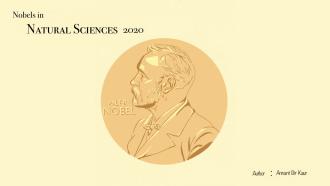
Image Credit: @NobelPrize
When the Royal Swedish Academy of Sciences announced that the year’s Nobel Prize in Chemistry is about the world’s smallest machines”, the world had found the answer to another Nobel laureate, Richard Feynman’s question - How tiny can you make machinery? “The Royal Swedish Academy of Sciences has decided to award the 2016 Nobel Prize in Chemistry jointly to Jean-Pierre Sauvage, Sir James Fraser Stoddart and Bernard Lucas Feringa for the design and synthesis of molecular machines”, read a press note from the Academy. The machines developed by these laureates are controllable, nanometer sized objects, a thousand times thinner than a strand of hair, which can move around and perform a task when energy is added. The three winners will split the award equally, with each having played a different role in the development of molecular machines.
Prof. Jean-Pierre Sauvage was born in 1944 in Paris and obtained his Ph.D. in 1971 from the University of Strasbourg, France. He is currently Professor Emeritus at the University of Strasbourg and Director of Research Emeritus at the National Center for Scientific Research (CNRS), France. It all started in the year 1983, when Sauvage’s research group developed a ring shaped and a crescent shaped molecule and glued them together using a copper ion. Next, they chemically welded one ring with another, creating the first link in a chain. This invigorated the field of topological chemistry, where molecular structures in the form of long chains to complicated knots could be formed. By 1994, his group was successful in developing first non-biological molecular machine that could rotate and revolve.
“I have won many prizes, but the Nobel Prize is something very special, it’s the most prestigious prize, the one most scientists don’t even dare to dream of in their wildest dreams”, said Prof. Sauvage, soon after the prize was announced.
Sir James Fraser Stoddart, currently a Professor of Chemistry at the Northwestern University, Evanston, USA, made the next leap in the world of nano-machines. His research group succeeded in threading a molecular ring into a molecular axle. He created a rotaxane - a ring-shaped molecule that is mechanically attached to an axle. Since 1994, his research group has used various rotaxanes to construct numerous molecular machines, including a lift, which can raise itself 0.7 nanometres above a surface, a nano-machine that expands and contracts in a controlled manner like filaments in a human muscle, and a molecular computer chip with a 20 Kb memory. He has advised nearly 300 Ph.D. students and postdoctoral researchers in his laboratories over the past 35 yrs.
Prof. Bernard L. Feringa, born in the Netherlands in 1951, obtained his Ph.D. in 1978 from the University of Groningen, Netherlands. He is currently a Professor in Organic Chemistry at the University of Groningen. His group was instrumental in developing the first molecular motor. By 2014, the motor rotated at a speed of 12 million revolutions per second. His research group also built a four-wheel drive nanocar. When the wheels span, the car moved forward over a surface.
The coveted prize recognizes the success of the three scientists in linking molecules together to design everything from motors to muscles on a tiny scale.Researchers around the world are using the groundbreaking toolbox of chemical structures, which these stalwarts developed, to build increasingly advanced nano-machines. “We will build smart materials in the future that are a big opportunity, materials that will adapt themselves, that will have properties that can change because they pick up a signal. You can think of nanoscale energy converters, tiny machines that can store energy and can use that energy. It opens up a whole new world of nano-machines”,explains Prof. Feringa.These molecular machines could be used to deliver drugs within the human body, targeted therapeutics in case of cancer, design of smart materials and advance computer technology.






